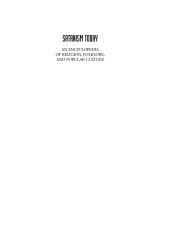I. VAMA MARGA Foundations Of The Left-Hand Path - staticfly.net
I. VAMA MARGA Foundations Of The Left-Hand Path - staticfly.net
I. VAMA MARGA Foundations Of The Left-Hand Path - staticfly.net
You also want an ePaper? Increase the reach of your titles
YUMPU automatically turns print PDFs into web optimized ePapers that Google loves.
as a sadist. For the most part, these torn souls have no choice in the matter –<br />
they are often driven by powerful psychic compulsions. <strong>The</strong> mindless cruelty<br />
of such individuals' actions bears no relation at all to In both cases, those<br />
443<br />
typically described as sadists or masochists usually lack control, and control<br />
is one of the essential factors of the left-hand path. Also, there is not<br />
necessarily an erotic component to the actions of the sadist or the masochist,<br />
and without eroticism we are no longer speaking of the left-hand path.<br />
Sigmund Freud, who condemned all magical impulses as "neuroses", was the<br />
first to place Krafft- Ebing's coinages together, seeing sadism and masochism<br />
as shades of a continuum he dubbed "sadomasochism" in 1938.<br />
<strong>The</strong>n there is the matter of the historical personages whose names<br />
were combined to form the word: the infamous French philosophe Donatien<br />
Alphonse Francois Marquis de Sade (1740—1814) and the lesser known<br />
Austrian literary figure Leopold von Sacher-Masoch (1835—1895), the<br />
author of Venus In Furs. While certainly each writer's works are interesting in<br />
their own light, much of what they wrote is simply irrelevant to the sinister<br />
current sex magician.<br />
444<br />
It is easy to misinterpret the Sadean oeuvre as a conscious celebration<br />
of Satanism, a romantic concept which has been inspired more by de Sade's<br />
posthumous legend than anything the man actually wrote in his voluminous<br />
novels. De Sade was a thoroughgoing atheist who clearly recognized no<br />
spiritual force in the universe other than man, an attitude quite typical of the<br />
so-called Age of Enlightenment. He avidly considered Nature to be the<br />
highest good, the arbitrator of unbreakable laws that men should ideally<br />
surrender to. De Sade's exaltation of Nature has much in common with Jean-<br />
Jacques Rousseau; both men preached in favor of a naive return to an<br />
imagined utopia when man was presumably a "noble savage".<br />
This philosophy, despite de Sade's undeserved Satanic reputation,<br />
could not be less in keeping with the metaphysical orientation of the left-hand<br />
path, whose magicians deliberately work against the predictable flow of<br />
nature to realize their objectives. Nor does the Divine Marquis' obsessively<br />
articulated hatred of Christianity qualify him as an advocate of the left-hand<br />
path, despite popular misunderstandings of this point. Although the Marquis<br />
de Sade's elaborate erotic fantasies may serve as fuel for the imagination of<br />
the sex magician, his basic philosophy and approach to existence seeks above<br />
all to attune mankind with Nature, understood as an impersonal force that<br />
inspires all of man's desires, including his love of torture and murder.<br />
One has to admire the audacity of his vision, a yearning "to attack the<br />
sun, to expunge it from the universe, or to use it to set the world ablaze –<br />
these would be crimes indeed!" Although such savage declarations are<br />
superficially transgressive of societal and sacred taboo, they seem ultimately<br />
hollow. Perhaps this is due to the fact that the Divine Marquis, who spent<br />
much of his life in prison, never actually had the freedom to explore the<br />
extravagant erotic fantasies he wrote about. This lack of any basis in reality<br />
weighs De Sade's novels down with a monotonous sterility, and the flights of<br />
his fantastic imagination never really leave the page.<br />
Leopold von Sacher-Masoch, actually the more gifted writer of the<br />
two, demonstrated a greater magical understanding of erotic pain but the<br />
regrettable reduction of his name to a negative psychological diagnosis<br />
reduces its suitability for the sex magician. Nevertheless, Sacher-Masoch's<br />
Venus In Furs is an evocative study of a thinly disguised Sacher-Masoch's<br />
exaltation of a savage archetype of the atavistic huntress, the cruel Feminine<br />
Daemonic in human form, an impassioned submission to shakti power<br />
bordering on the sacred.<br />
For the specific purposes of this study, we prefer to classify activities<br />
centered on the erotic application of physical or psychological pain with the
















